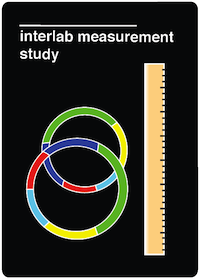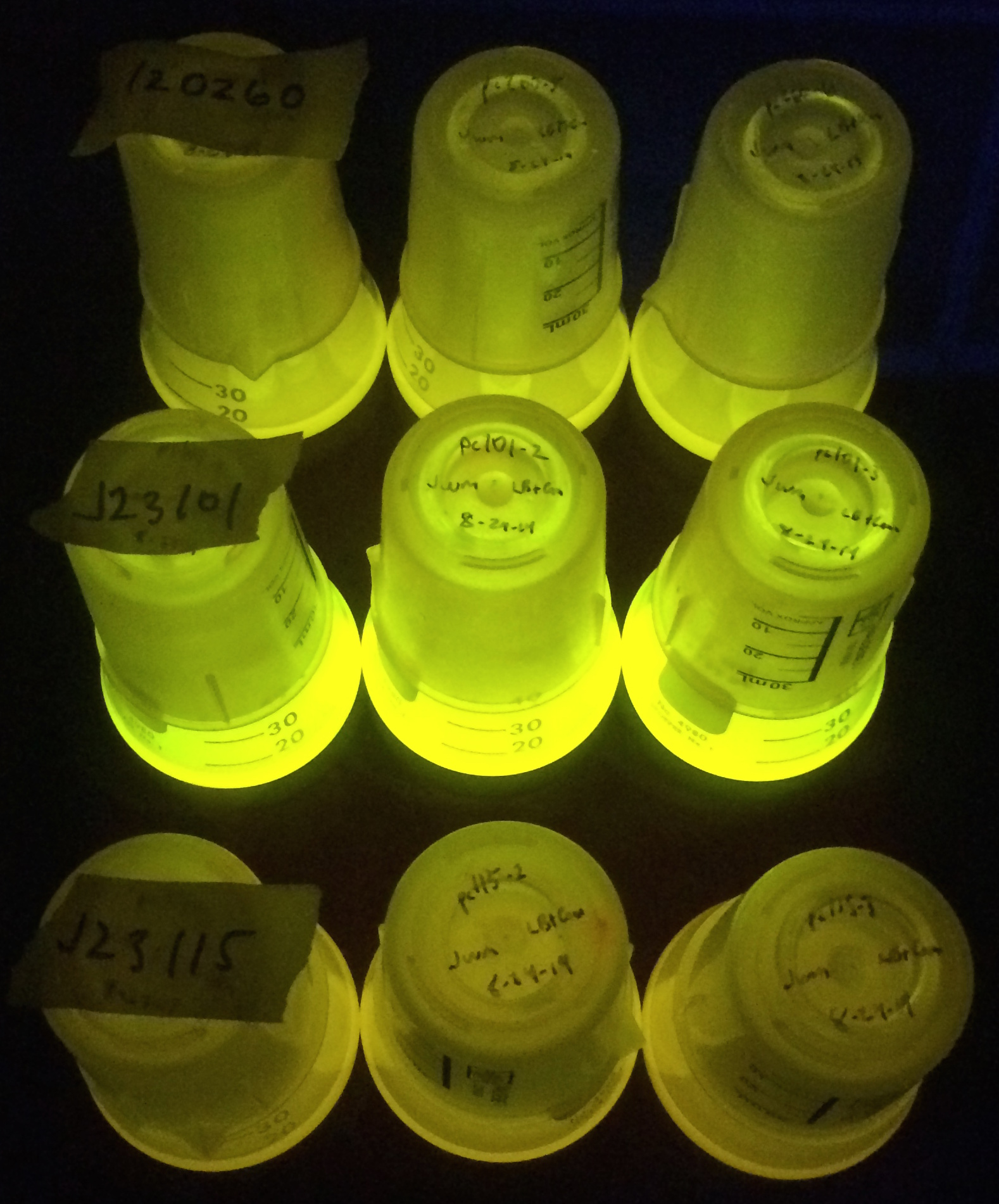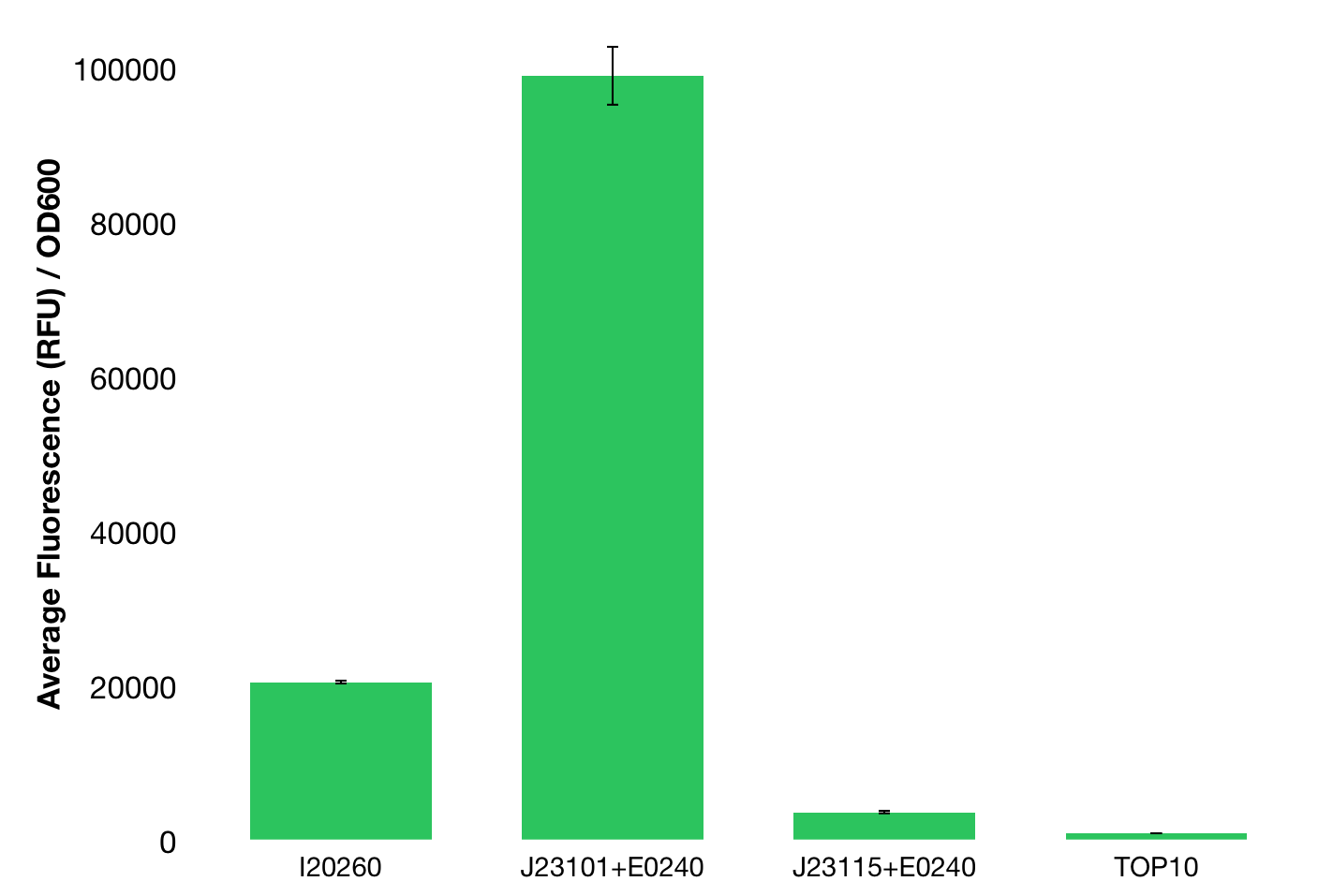Team:Austin Texas/interlab study
From 2014.igem.org
(→Microplate Reader Data and Discussion) |
|||
| Line 72: | Line 72: | ||
</html> | </html> | ||
<!-- WIKI CONTENT BEGINS --> | <!-- WIKI CONTENT BEGINS --> | ||
| + | [[Image:Austin_Texas_Interlab_Study.png|right]] | ||
| + | __TOC__ | ||
| - | + | ||
| - | + | ||
| - | + | ||
| - | + | ||
| - | + | <h1>Interlab Study</h1> | |
The interlab study is a new feature of iGEM this year. As part of the measurement track, we participated in the interlab study as described on the [https://2014.igem.org/Tracks/Measurement/Interlab_study Interlab Study page]. The purpose of this study was to measure the fluorescence of three different devices, two of which we constructed in lab from biobrick parts. The third device was simply recovered from the 2014 parts kit. Below we detail our interlab study experience and discuss what are findings mean. | The interlab study is a new feature of iGEM this year. As part of the measurement track, we participated in the interlab study as described on the [https://2014.igem.org/Tracks/Measurement/Interlab_study Interlab Study page]. The purpose of this study was to measure the fluorescence of three different devices, two of which we constructed in lab from biobrick parts. The third device was simply recovered from the 2014 parts kit. Below we detail our interlab study experience and discuss what are findings mean. | ||
| - | + | <h1>Devices Measured</h1> | |
[[File:interlabliquidcultures.jpg|240px|right|thumb| Figure 1. Triplicate liquid cultures of each construct]] | [[File:interlabliquidcultures.jpg|240px|right|thumb| Figure 1. Triplicate liquid cultures of each construct]] | ||
| Line 104: | Line 106: | ||
*This device is in [http://parts.igem.org/Part:pSB1C3 pSB1C3], the same backbone as the first device. | *This device is in [http://parts.igem.org/Part:pSB1C3 pSB1C3], the same backbone as the first device. | ||
| + | <h1>Protocols</h1> | ||
| - | + | <h3>Sample Preparation</h3> | |
| - | + | ||
| - | + | ||
| - | + | ||
| - | + | ||
*First, inoculate triplicate 10 mL cultures of LB with frozen stocks of the three devices (in TOP10 cells; I20260, J23101+E0240, J23115+E0240), a cell background control (TOP10 cells), and an LB only control in a 50 mL Erlenmeyer flask. Grow for 16-18 hours at 37°C, shaking at 300rpm. | *First, inoculate triplicate 10 mL cultures of LB with frozen stocks of the three devices (in TOP10 cells; I20260, J23101+E0240, J23115+E0240), a cell background control (TOP10 cells), and an LB only control in a 50 mL Erlenmeyer flask. Grow for 16-18 hours at 37°C, shaking at 300rpm. | ||
*The next morning, add 10µL of each overnight culture to 10 mL of LB with three replicates of each (15 total flasks) and grow 16-18 hours at 37°C, shaking at 300rpm. Triplicate cultures were continued. | *The next morning, add 10µL of each overnight culture to 10 mL of LB with three replicates of each (15 total flasks) and grow 16-18 hours at 37°C, shaking at 300rpm. Triplicate cultures were continued. | ||
*After 16-18 hours, add 80 µL of each culture to the wells of a clear-bottomed black 96-well plate. | *After 16-18 hours, add 80 µL of each culture to the wells of a clear-bottomed black 96-well plate. | ||
| - | + | <h3>Measurement Protocol</h3> | |
The fluorescence of each sample was measured using a 96-well plate as follows: | The fluorescence of each sample was measured using a 96-well plate as follows: | ||
*The 96-well plate was inserted into an Infinite 200 PRO Microplate Reader | *The 96-well plate was inserted into an Infinite 200 PRO Microplate Reader | ||
| Line 121: | Line 120: | ||
*Finally, the plate reader measured the fluorescence and the absorbance (OD600) for each well. | *Finally, the plate reader measured the fluorescence and the absorbance (OD600) for each well. | ||
| - | + | <h1>Sequencing Data</h1> | |
http://parts.igem.org/Promoters/Catalog/Anderson | http://parts.igem.org/Promoters/Catalog/Anderson | ||
| Line 134: | Line 133: | ||
[https://static.igem.org/mediawiki/2014/9/9a/2014_UT_Austin_iGEM_Interlab_Study_Sequencing_Data.zip Compilation of all three sequences in .ab1 format with quality metadata ] | [https://static.igem.org/mediawiki/2014/9/9a/2014_UT_Austin_iGEM_Interlab_Study_Sequencing_Data.zip Compilation of all three sequences in .ab1 format with quality metadata ] | ||
| - | + | <h1>Microplate Reader Data and Discussion</h1> | |
[[File:interlabchartminimal.png|440px|right|thumb| Figure 2. Fluorescence data for the three parts measured.]] | [[File:interlabchartminimal.png|440px|right|thumb| Figure 2. Fluorescence data for the three parts measured.]] | ||
| - | |||
Data was collected using Infinite 200 PRO Microplate Reader and a 96 well black plate with 80 ul of culture per well. '''As can be seen in Figure xx, ... Make sure to mention the triplicate cultures, average values, etc... [edit this template]''' | Data was collected using Infinite 200 PRO Microplate Reader and a 96 well black plate with 80 ul of culture per well. '''As can be seen in Figure xx, ... Make sure to mention the triplicate cultures, average values, etc... [edit this template]''' | ||
| - | |||
| - | |||
Despite the genetic similarities in the devices: all three contained the same coding sequence, two devices had the same backbone and two devices had the same promoter sequence, there were stark differences in the amount of fluorescence produced by each of the devices. | Despite the genetic similarities in the devices: all three contained the same coding sequence, two devices had the same backbone and two devices had the same promoter sequence, there were stark differences in the amount of fluorescence produced by each of the devices. | ||
| Line 147: | Line 143: | ||
While we expected the device with a strong promoter and the highest copy number plasmid to have the highest fluorescence, in our hands this was not the case. Instead, we saw that the plasmid with a slightly lower copy number actually yielded the strongest fluorescence signal. It is possible that the very high copy number plasmid had a negative effect on overall fluorescence - perhaps it became toxic or slowed cell growth. However, it is also possible that we may have swapped cultures or mislabeled an initial conical or culture tube. | While we expected the device with a strong promoter and the highest copy number plasmid to have the highest fluorescence, in our hands this was not the case. Instead, we saw that the plasmid with a slightly lower copy number actually yielded the strongest fluorescence signal. It is possible that the very high copy number plasmid had a negative effect on overall fluorescence - perhaps it became toxic or slowed cell growth. However, it is also possible that we may have swapped cultures or mislabeled an initial conical or culture tube. | ||
'''add anything else, Jordan?---Also, I looked around and I found at least one other team that saw the same results. So, I think it is worth just explaining our results as we have them. It's possible the other backbone, while lower copy number has a better expression platform of some sort...''' | '''add anything else, Jordan?---Also, I looked around and I found at least one other team that saw the same results. So, I think it is worth just explaining our results as we have them. It's possible the other backbone, while lower copy number has a better expression platform of some sort...''' | ||
| - | |||
| - | |||
| - | |||
| - | |||
<!-- WIKI CONTENT ENDS --> | <!-- WIKI CONTENT ENDS --> | ||
Revision as of 02:30, 17 October 2014
| |||||||||||||||||||||||||||||
 "
"



